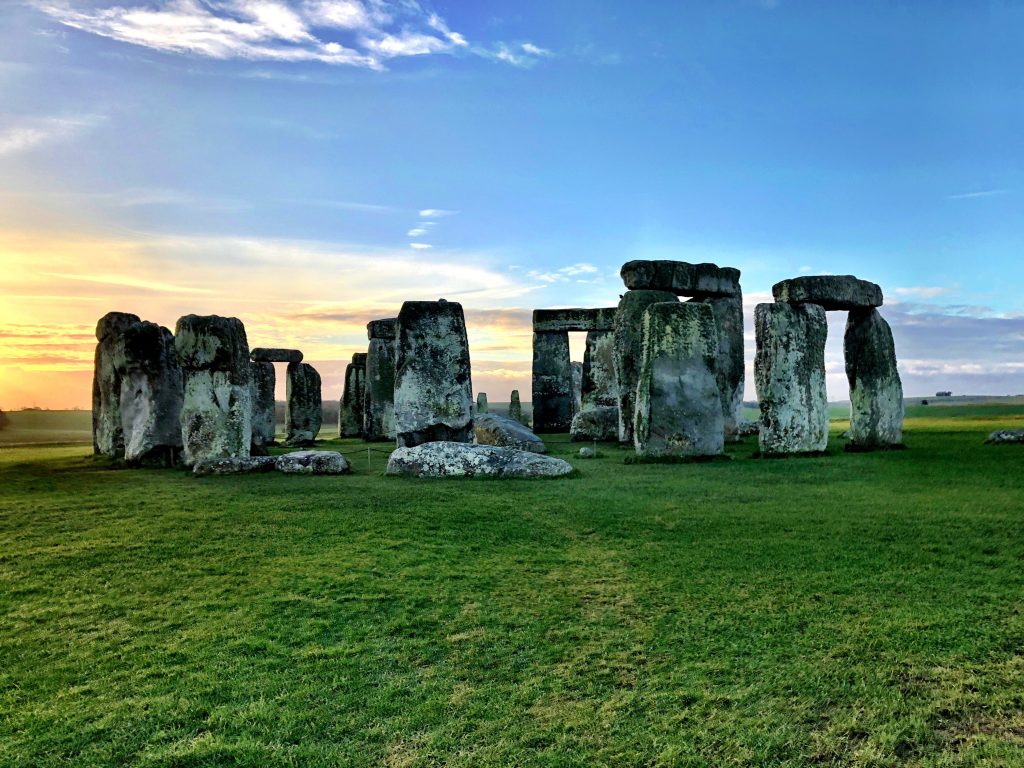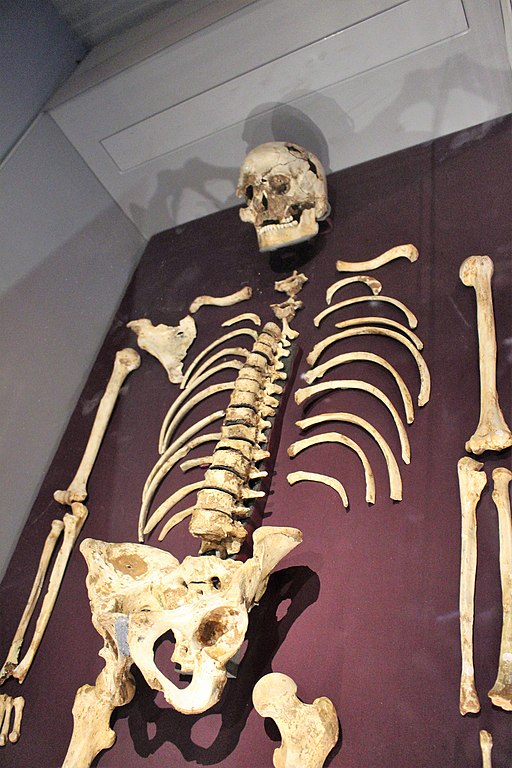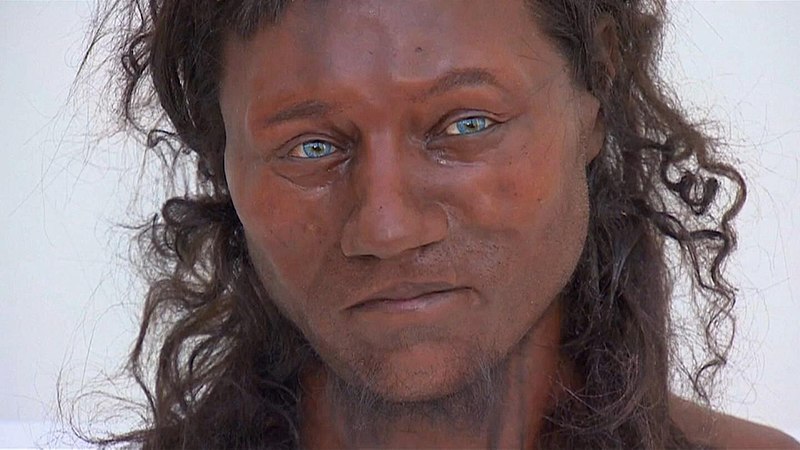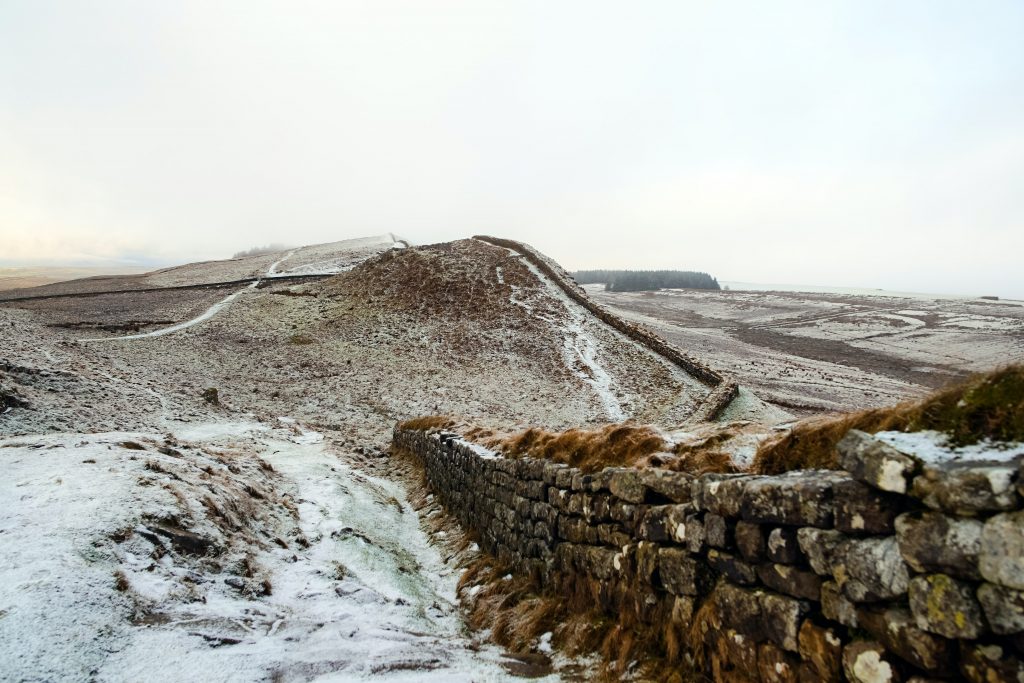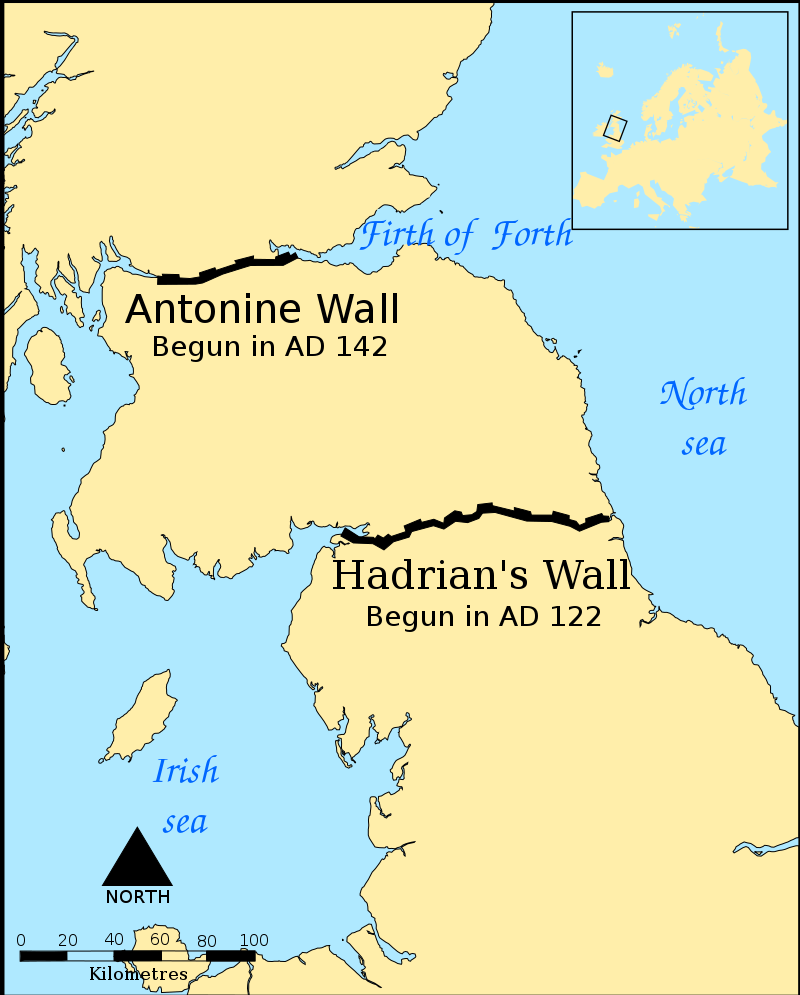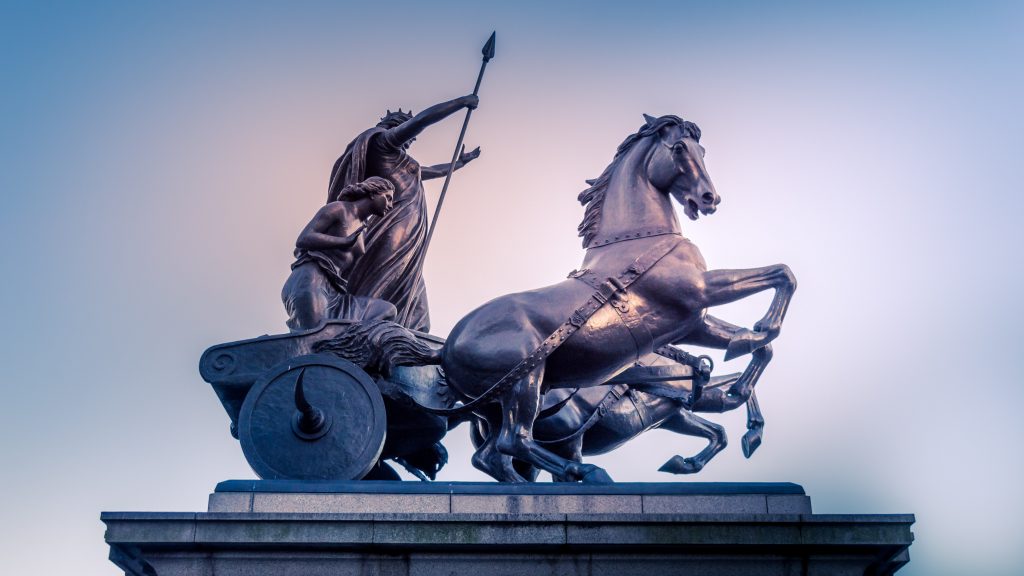The early history of Britain including Stonehenge and the Bronze and Iron ages. Roman Britain including Hadrian’s Wall and Boudicca.
Transcript
DownloadMark
Hello and welcome to the podcast English for Life in the UK. If you want to improve your English and, at the same time, learn a bit more about life in this country, then this podcast is for you. Today, I'm joined by Christine and John. Christine - how are you?
Christine
Well, I'm not bad, Mark - I'm not bad. Again - it's funny, being 4 o'clock in the evening, and it being dark. So, I'm taken aback by that - it really does feel like wintertime. But ...
Mark
Yeah, yeah
Christine
... My spirits are good.
Mark
Great. And how are you, John?
John
I've been very busy this week, Mark, I've been up to all sorts, yeah. I've been doing some online ESOL with some of our students; been doing some decorating and as I said, I think since the pubs have closed, I've made myself a lot busier, Mark, yeah.
Mark
That's great, that's great, good.
So, today we're starting ... we've got a historical episode. So, we're going to start to look at the early period of British history, so we're going to look at the early Britons and then we're going to look at the Roman ... the period when the Romans came to Britain. So those .... that's our main areas, for this podcast and, I think, Christine, you're going to start us off.
Christine
Well, yes - I'm interested in the time before the Romans came. Because at that time, we call it the prehistoric time, there weren't written records. When the Romans came here, people started writing about the country, but prior to that, ... we just have to look at what we find, to try to piece together what people were doing. And so, of course, there's .... we find ancient tools, and bones and ancient buildings, buried, often buried under the ground. Often excavating - archaeologists are digging them up: pieces of pottery and so on ...
Anyway - some of the interesting things that you might like to know : I mean, the first sign of modern people - definite evidence that there was a modern human being here - was 40,000 years ago. It was a jaw bone and they have ways of dating, dating bits of bones, so they know its about 40,000 years ago. There were, you know, around this time and prior to that, there were a series of "ice ages" where the planet got cold and this country - the United Kingdom - was covered in ice, at times. So people inhabiting the United Kingdom, sort of came and went.
The first full skeleton we've got is of "Cheddar Man" - it's called "Cheddar Man", because it was found in Cheddar Gorge, in a cave - and it's about 10,000 years old, and just very recently, scientists have done analysis of the DNA of that skeleton - and it was quite well preserved, so they could do it - this DNA analysis. And they found he had dark skin, dark: like an African, a sub-Saharan African; blue eyes and dark skin. Interesting. The oldest inhabitant had dark skin - I mean that was 10,000 years ago - by 6,000 years ago, people had paler skin - or certainly, 4,000 years ago, and they think it was farmers, coming from the Middle East, because they were quite pale-skinned. So, it's interesting that, that people from the Middle East brought the paler skin to this country.
Now those people, 10,000 years ago: they will have arrived here by walking because, at that time, Britain was joined to Europe - there was no ... the English Channel wasn't there - it was "Doggerland" - it was called, the way across the North Sea - but eventually, that ... it was flooded. About 8,000 years ago, it was flooded. So after that, people, many people still came, many people still came, but they will have had to come by sea and er ...
So the most famous prehistoric site is probably Stone Henge and that was about 4,500 years ago, that was built. A great big circle of huge stones, standing in a circle on Salisbury Plain. It's very famous, very famous. In fact, I was amazed, when I went to visit Orkney, in the north of Scotland, recently. There's evidence of much older buildings, possibly even, temples. A place called the Ness of Brodgar. It's just been uncovered recently. I think the farmer wanted to plough up a meadow or something, a dozen years ago, and when he started ploughing up, he found all these ancient ruins. So the Ness of Brodgar, is - it was started - one of the oldest things they've found so far, are well over 5,000 years old, and it was inhabited and used certainly over 1,000 years, and there's a whole collection of ancient buildings that seem to be too large to just be houses,
Mark So that one you're talking about in Scotland, and also, the Stone Henge in England, do we think that they may have had some religious significance, is that right, or do we not really know at this stage?
Christine Well, it's really interesting, when we were at the Ness of Brodgar visiting, we were speaking to one of the archaeologists there and he was describing the things he was finding, And he said, 'well, we think this is ceremonial' - and, he said, what that means, is we don't know, so we're just guessing it's ceremonial. In other words, it's not clearly for eating or fighting, or any of those day-to-day activities, so they just say 'ceremonial', but they have to just piece it together. They don't know but it was certainly a very important place.
As a child, too, I went to Orkney - I went to a place called Skara Brae, and that's over 5,000 years old. Suddenly, there was a sandstorm, over 100 years ago - sorry - I'm getting this the wrong way round! There was a storm and it uncovered and blew away the sand, that was covering Skara Brae, it's called this ancient village there. Those are houses though, rather than temples. Clearly, houses because when I went there as a child, myself and my sister, those days, you could just walk through the houses, and we played houses, we made a cup of tea on the hearth and there was tables and cupboards and beds that we could lie down in - really remarkably well-preserved - this Stone Age village.
Now of course there was a long time between that and the arrival of the Romans. Ness of Brodgar ... it was 4,000 odd years ago that they were last used. And .. so they have what's called the Bronze Age, when metals were introduced to the country: bronze, copper and tin. So they find things made of metal - and then the Iron Age. You might know that by hill forts, dwellings that are found on the top of hills, more often in the south of England - hill forts - you suddenly see a funny shape - the hill looks like it's got a wall around the top of the hill and that's often an Iron Age hill fort.
In Scotland, and elsewhere, and down here in Yorkshire, there was something called "crannogs" which are dwellings in lakes - they're built on wooden platforms in lakes. People think they do that, because it was clearly a dangerous time - in the Iron Age - so you needed to be well-defended against other people.
Mark
That's great. You mentioned "archaeologists" at one point, Christine. Maybe just explain what an archaeologist is.
Christine
Well, they're a scientist who uncovers ancient, these ancient buildings, and who looks for ancient, ancient, ancient items.
Mark
We have things called "a dig" don't we? A dig is usually, is usually, a site where there's something being found that is ancient and they are carefully digging it out, to find ... to see what they find, in terms of the building, some pottery and clothing and armour and stuff like that, yeah.
So John, then the next stage we want to look at is when the Romans arrived in Britain. Do you want to tell us a bit about that?
John
We're moving on now to the advent of Roman Britain. We basically became part of the Roman Empire, for 400 years. The first time the Romans came here, they'd already conquered Gaul, which anybody who's read the "Asterix" books, as a child, will know that Gaul is roughly the equivalent to modern-day France. So moving on from the conquest of Gaul: some of the Romans decided they'd like to invade Britain. Arguments about this! Some of the Romans - the emperor Tacitus, described it as 'a wretched, horrible place', with a dreadful climate; they thought we we were basically savages and barbarians, but there were some people in Rome thought it'd be beneficIal to conquer Britain, because they thought there would be gold here, riches here, slaves - things that they could exploit. So in 55 - 54 BC , Caesar sailed across the Channel and arrived in Kent, with an army, and began the conquest of Britain This was a way - for Caesar - obviously people know about Caesar - this was a way for people like Caesar and his generals to gain political power in Rome. If they went off to Britannia, or Gaul - this would boost their power, in terms of in the metropolis .
55 before BC - Caesar landed - erm ... this went on for quite a long time. It wasn't until 43 AD, so about 80 years later, it was until Claudius finished the job of conquering Britain. And again, he needed this victory to shore up his position as the Emperor in Rome. It brought him power and glory back home in Rome and he even named his son Britannicus, in honour of his conquering. It took them 30 or 40 years to get up to Hadrian's Wall, which, to this day, roughly marks the border between England and Scotland. So the Romans built a very large, defensive wall - Hadrian's Wall - and further up ... built one as well, further into Scotland. They built the Antonine Wall, between Glasgow and Edinburgh, some parts of which are still visible, today. So, these are the only physical remains that we see of the Romans. There's places like the baths and places like that - but unlike the Normans, who are coming later - we will talk about them in a coming podcast - there's not really a lot of ... not really that much that we see in terms of physical remembrance of the Roman period.
So as I say, they were here for 400 years - many Britons, the people who were living here at the time - they fell into line with the Romans and they adopted Roman ways of living. So there were up to 1,000 villa sites - these are some of the things that the archaeologists have come up with - that Christine were [was] referring to. There's some absolutely beautiful villas that they built - the temples and the bath houses, very much in the same style as what they would see in Rome at the centre of the Empire.
And obviously, in terms of the cultural impact, they brought with them Christianity to the island - so, that's been a very important change in the way of people's lives - how they worshipped.
It wasn't without incident. There were various rebellions at various times, as the Romans sought to extend their influence across these islands. Probably the most famous of which - we used to call her Boudicca - now they pronounce it 'Boudicca' - I believe that's the correct pronunciation - but she was the queen of the Icenic tribe which is in .. they were in an area which is in East Anglia - around Lincoln, Norfolk - that sort of area.
On the death of her husband, the Roman authorities went to claim her lands. Boudica, obviously not very happy about that, they were imprisoned and assaulted; trett [treated] really, really badly. While this was happening, the governor of Britain, Suetonius Paulinus was campaigning actually up in Wales, so he was fighting against the Druids, up in Anglesey, which we mentioned earlier. She used this opportunity to raise an army. She marauded down through - erm - Camulodnum, which is modern-day Colchester - and Londinium - which, you can probably guess, is modern-day London - and Verulamium, which is near St Albans. Killing an estimated 70,000 - 80,000 people, sacking all these cities. So eventually Suetonius regrouped his forces in the West Midlands and there was a huge battle - I'm not exactly sure where is were [was], somewhere between London and the West Midlands, Boudicca was killed and the rebellion was put down. But Boudicca does stand out, there's a very large statue of her on Westminster Bridge and she kind of became a folklore hero, especially in the reign of Elizabeth I (the first). They drew parallels between Elizabeth I and Boudicca, fighting against the Spanish Armada, standing up for British liberty, against the invaders.
A lot of very interesting things come from this period: the most long-lasting impact was bringing Christian worship to the islands. That declined under the Anglo-Saxons, the Vikings who were pagan , but what it did do, was implanted Christianity in Ireland, which then paved the way for it to be reintroduced to the British mainland in later centuries.
Mark
I suppose the other thing I always think of, in terms of Roman Britain, is the roads.
John
Well many of modern day roads do actually follow the original roads - things like Watling Street, and the route of the modern A1 up to Edinburgh, follow the exact route of the roads the Romans built, Mark - that's true.
Mark
Yes - and I think that the way they constructed their roads was quite an advanced form of engineering, for the time.
Christine
- I wonder have you visited Hadrian's Wall, or any of the ...? Any of the Scottish sites?
Christine
Yes, I have - I mean John didn't say this - the reason why these walls were built was to keep the Scots out - who were these savage barbarians or whatever - who were fighting too hard against Roman occupation! So these big walls were put there to keep people out. Well, I have visited and what I found very interesting - where there's a section .. it's like letters, tablets - that the people who were stationed there have written home - they were sending letters home - and there were people from North Africa so there were North Africans stationed on Hadrian's Wall, writing home, saying 'For goodness' sake, send some warm clothes - it's cold here'.
And I realised, as part of the Roman Empire, there were people from all over Europe, all over the Mediterranean, North Africa, that were coming to Britain. I mean, most of them came and worked or were stationed there for a number of years and will have left, but some settled, as well.
John
That were kind of an advantages and a disadvantage, as well. I looked at armies that were garrisoned at places like the Antonine Wall, and Hadrian's Wall and there were some from as far away as Armenia, Syria, Algeria - or what would be modern day Algeria. So it proves that the extent of the Roman Empire, but that in itself, went on to be one of the reasons that it collapsed around AD400 because the Empire was over extended. That really kind of did foresee the decline of the Roman Empire.
Christine
Yes. I think what interests me, is the fact that in modern times, people think of immigrants, people coming you know, people coming to this country think of it as being a twentieth century thing, but actually, it's been happening throughout history. People who have come to this country, and black people have come to this country, or - as I was saying earlier - it was the black people who were here first, and then the paler people who came. It's just interesting having that kind of historical look on the modern discussions of immigration.
Mark That's great. Thank you very much Christine and John. I hope our listeners have found that useful and next week, we'll pick this up, by looking at some more of these people who came over to Britain in the er, in the distant past.
Language Support
Mark
This is the part of the podcast where I choose a few words or phrases and explain them in a bit more detail.
Today, at the beginning, in ... when we were introducing ourselves, Christine said
"I'm taken aback by the fact that it gets dark so early"
to be taken aback is another way of saying 'surprised' - she was surprised that it was getting dark so early.
John, when he was introducing himself, that he'd been doing some "online ESOL"- online means using the internet or, in our case, quite often Zoom or WhatsApp.
ESOL stands for English for Speakers of Other Languages, and so, it is an expression used for the teaching of English to those, for whom English is not their first language. It's what we are about, in this podcast.
Then I'm going to choose two expressions which John used, which are part of his Yorkshire dialect. We've explained in previous episodes that there are different dialects in different parts of the country, as in most countries and in most languages. John is from Yorkshire, and he uses some expressions that are Yorkshire expressions, rather than standard English. For example, when he was talking about Boudicca - he said,
"she was treat really, really badly"
and that in standard English, that would be she was treated really, really badly and that would mean - that means she wasn't looked after, the behaviour towards her was bad. But the Yorkshire expression is "trett", and standard English is "treated".
Finally, when John was talking about a battle, he said
"we are not sure where it were" .
That is a Yorkshire expression for saying "we're not sure where it was", "where it took place".
That's it for this week, you can find the transcript - that's the written version of this episode - on our website: www.staugustinescentrehalifax.org.uk
And that's where you can also find links to all the other episodes and the transcripts, so you can listen and read along at the same time.
That's also where you can find out how to donate, to help our work. We are a charity supporting particularly, refugees, asylum seekers and migrants but also, all those in need in our local area and we would welcome your support, if you felt able to give it. If you follow on the website, the links to "Get Involved" and "Donate".
We also have an email address - that's englishforlifeintheUK@gmail.com and we would love to hear from you - your thoughts on our podcast and ideas for the future.
We also have a Twitter account : @EsolSaint and there is additional material on that site.
I will spell out all those addresses: So, the website: w-w-w.-s-t-a-u-g-u-s-t-I-n-e-s-c-e-n-t-r-e-h-a-l-i-f-a-x.org.uk So that's the website.
The email is: englishforlifeintheUK - And that's for spelt: english-f-o-r
And finally, the Twitter account: that's spelt: E-s-o-l-S-a-I-n-t
Thank you very much for joining us and we will be back with you, very soon.
Goodbye for now.
All Podcast Episodes
